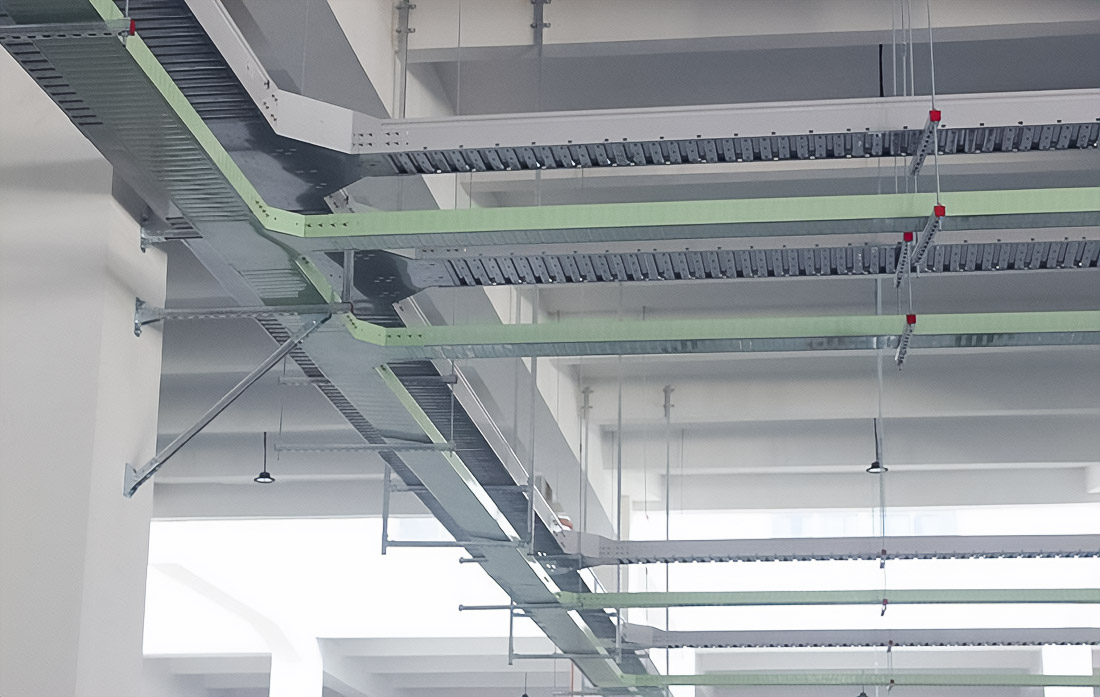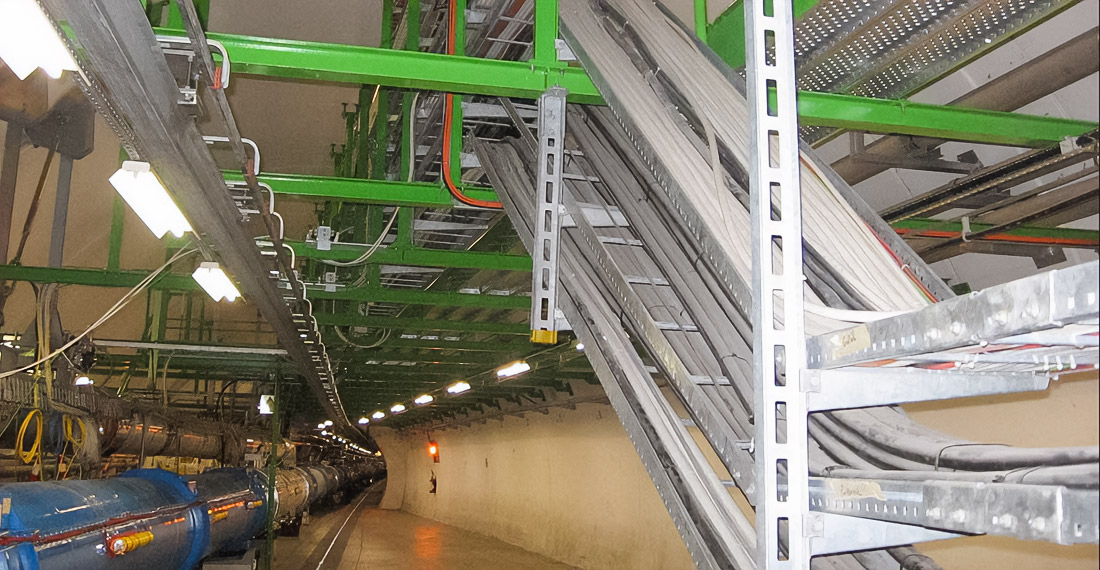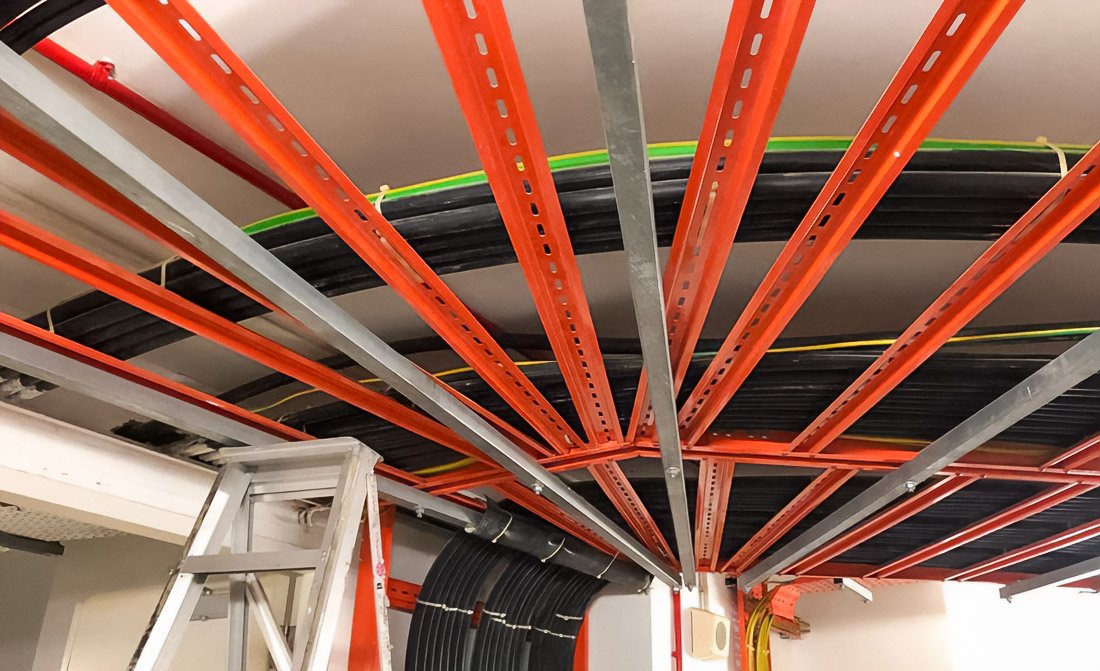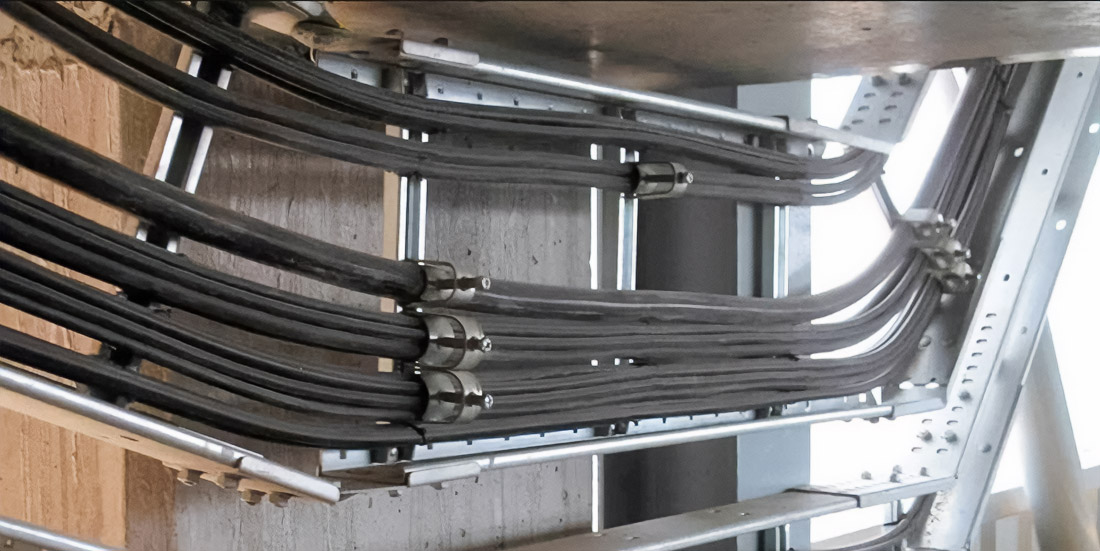Pre‑galvanized trays receive a zinc coating after rolling (before bending), the thickness of the zinc layer is usually about 15-25 micrometers. This coating provides protection against surface corrosion for several years but quickly wears out at the edges of the cut and during bending. In conditions of coastal salty humidity, the service life may be limited to 5-7 years.
In contrast, hot‑dip galvanization is performed after the tray is made: the product is immersed in a bath of molten zinc, forming a thick layer of 50-100 micrometers and a Fe‑Zn alloy. This ensures durability and resistance to abrasion, scratches and mechanical damage: the service life in the coastal area can exceed 15-20 years without noticeable corrosion wear.
2. Preferences of Dubai contractors

Most of Dubai’s large contracting companies, especially those operating in ports, coastal residential complexes and oil and gas infrastructure industries, prefer hot‑dip galvanized trays. It’s connected with:
- The requirement to comply with the standards ASTM A123/A123M‑17 and ISO 1461, mandatory for projects DEWA, DP World, Dubai Ports.
- The need to minimize maintenance and replacement costs due to corrosion in storm zones and high humidity.
cable tray manufacturers in the UAE also offer hot‑dip galvanized tray designs, proven by salt mist tests according to ASTM B117: exposure time up to 1000-2000 hours without visible corrosion.
3. Economic efficiency factors

Although pre‑galvanized is cheaper to start with (usually by 10-20% compared to hot—dip), when designing coastal facilities, contractors estimate the service life and cost of ownership. Additional protection and long‑term preservation of the coating make hot-dip more profitable in the medium and long term.
According to the contractors’ analysis, the resulting savings can reach up to 30% of replacement and maintenance costs over a 10‑year operating cycle when choosing hot‑dip.
4. Standard sizes and design features

Hot‑dip galvanized trays manufactured by cable tray manufacturers in uae are available in standard ranges: width 100-600 mm, side height 50-75 mm for ladder and perforated models. Reinforced flanges, stiffeners and accessories (connectors, corners, T‑branches) are made with the same coating.
In projects with long spans (up to 2 m) and heavy cable runs (up to 75 kg/m), hot‑dip options provide longitudinal rigidity and vibration resistance, which is especially important in communication tunnels and telecom corridors.
5. Compliance with standards and certification

Cable tray makers follow special rules to make sure the trays are strong and safe. They check if the trays can hold weight and if they don’t get rusty. These trays are used in big places in Dubai like power stations, ports, and city buildings.
6. Practical cases
The Dubai Marina Yacht Club project did not require equipment replacement after 12 years of operation: hot‑dip galvanized trays retained their condition even in conditions of sea salt and humidity. And in one of the projects of the hot‑dip port container terminals, the coatings withstood more than 1,500 hours of tests in salt mist without visible traces of corrosion.
Conclusion
In places near the sea like Dubai, people use strong cable trays to hold wires. They choose hot-dip galvanized trays because they do not rust and last a long time. These trays are safe and easy to take care of. They can be used for many years without problems.
Hello! My name is Michael Thompson, and I am an entrepreneur from Canada who opened my business in Dubai. The UAE is known for its dynamic economy, favorable environment for investors, and innovative business landscape. After many years of dreaming about my own business, I decided and launched my company here.

